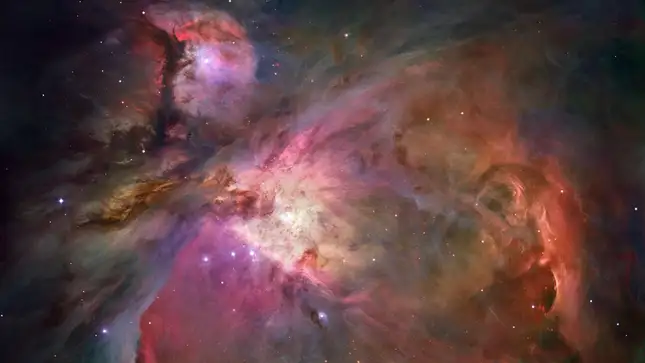A team of astronomers have detected over 500 planet-like objects in the inner Orion Nebula and the Trapezium Cluster that they believe could shake up the very definition of a planet.
The 4-light-year-wide Trapezium Cluster sits at the heart of the Orion Nebula, or Messier 42, about 1,400 light-years from Earth. The cluster is filled with young stars, which make their surrounding gas and dust glow with infrared light.
The Webb Space Telescope’s Near-Infrared Camera (NIRCam) observed the nebula at short and long wavelengths for nearly 35 hours between September 26, 2022, and October 2, 2022, giving researchers a remarkably sharp look at relatively small (meaning Jupiter-sized and smaller) isolated objects in the nebula. These NIRCam images are some of the largest mosaics from the telescope to date, according to a European Space Agency release. Though they cannot be hosted in all their resolved glory on this site, you can check them out on the ESASky application.
A planet, per NASA, is an object that orbits a star and is large enough to have taken on a spherical shape and have cast away other objects near its size from its orbit. According to the recent team, the Jupiter-mass binary objects (or JuMBOs) are big enough to be planetary but don’t have a star they’re clearly orbiting. Using Webb, the researchers also observed low-temperature planetary-mass objects (or PMOs). The team’s results are yet to be peer-reviewed but are currently hosted on the preprint server arXiv.
[…]
In the preprint, the team describes 540 planetary mass candidates, with the smallest masses clocking in at about 0.6 times the mass of Jupiter. According to The Guardian, analysis revealed steam and methane in the JuMBOs’ atmospheres. The researchers also found that 9% of those objects are in wide binaries, equivalent to 100 times the distance between Earth and the Sun or more. That finding is perplexing, because objects of JuMBOs’ masses typically orbit a star. In other words, the JuMBOs look decidedly planet-like but lack a key characteristic of planets.
[…]
So what are the JuMBOs? It’s still not clear whether the objects form like planets—by accreting the gas and dust from a protoplanetary disk following a star’s formation—or more like the stars themselves. The Trapezium Cluster’s stars are quite young; according to the STScI release, if our solar system were a middle-aged person, the cluster’s stars would be just three or four days old. It’s possible that objects like the JuMBOs are actually common in the universe, but Webb is the first observatory that has the ability to pick out the individual objects.
[…]
Source: Quasi-Planets Called JuMBOs Are Bopping Around in Space

Robin Edgar
Organisational Structures | Technology and Science | Military, IT and Lifestyle consultancy | Social, Broadcast & Cross Media | Flying aircraft

